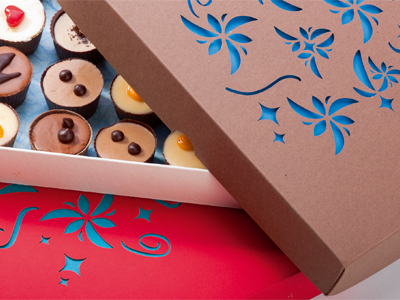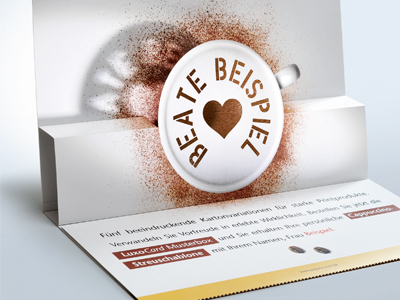Lasers used in machines like the motioncutter are compact, cheap and powerful enough to cut paper directly, usually without edge burning
As digital printing becomes mainstream, attention has turned to getting the same benefits at other points in the production cycle, finds Simon Eccles.
Cutting tables, finishing tables or plotting tables, call them what you will, were developed from large pen plotting drums and tables for CAD and plan work. With heavy duty construction, XY moving-head tables can exert a lot of downforce, which helps them form creases in cartonboard using rotary tools.
Suppliers such as AXYZ, Blackman & White, Esko Kongsberg, Mimaki and Zünd have specialised in large format, high speed tables, some with the ability to route into thick and tough materials such as wood and metal. Most carry multiple tools, allowing automatic changes on the run (cutting plus creasing at a minimum), often with camera-based registration to align automatically to the image on the sheet. Speed depends on the media being finished as well as the complexity and distance of the head movements. Figures to look out for are the metres per second and acceleration.
Too big to sail
Users of digital presses of the most common SRA3 formats often have on space constraints, so the very large plotting tables used in large format signage, or the biggest of the laser finishers may not be practical. Some suppliers have developed compact tables for smaller format printing, while others keep to big beds but can handle multiple sheets at once, aided by camera registration.
Automatic feeders are rare in the smallest sizes, which limits their appeal for small scale production. An exception was Esko Kongsberg’s smallest model, the i-XE10 Auto, with a sheet feeder and stacker inline for unattended short-run production, which has now been discontinued. Mimaki has a very compact hand fed cutting table, the CFL-605RT, with a bed size of 610 x 510 mm and a footprint of just 1320 x 1045 mm intended to complement the company’s UJF family of ‘baby’ UV-cured flatbed inkjets, from A3 up to B2+. However, it’s equally suited to any printer up to B2 size. It has tools for cutting and creasing cartonboard or thicker media such as foamboard. List price is £14,995.
Cutting the price
A less familiar name is Valiani from Italy. Its Mat Pro Ultra series of three models is sold by Nth Degree Imaging as well as Morgana in the UK, with prices from £10500 to about £17000. All can have vacuum beds. The smallest and rather basic 80 model takes sheets up to 815 x 610 mm, and has a footprint of 1100 x 1020 mm. The larger 120 and 150 models have more sophisticated options for multi-zone vacuum beds, pneumatic clamps and camera registration.
An even more affordable option is the tabletop SRA3 machine from Graphtec GB, which with an automatic 120 sheet capacity feeder and i-Mark registration system costs £3995. Taking 30-40 seconds per sheet, it will not win any prizes for speed, but the ability to feed it a load of work and leave it to it, (and to ability to load the feeder while it is running), makes it well worth a look for occasional low volume jobs.
Lasers go mainstream
Laser cutters long ago shed their science fiction (or Goldfinger) image. They were first used in the 1980s to create guide slots in plywood formes to take metal cutting and creasing rules. They were big, slow and pricey. Today lasers are compact, cheap and powerful enough to cut paper and other media directly, usually without edge burning.
The advantage of a laser is the high speed potential, much faster than a plotting table. It can also cut ‘filigree’ ultra-fine detail for fancy greetings cards and the like, that’s difficult with any other process. However, lasers can’t actually crease, they can only etch, ie part-remove material to produce in effect a deep score. However LasX claims to have research that concludes that etched folds are little different to conventional pressure-formed folds. Fast laser finishing cutters were first seen in the narrow web market. We’re now seeing wider systems with feeders and belt transfers that can handle B2 or B1 sheet widths at speeds that can keep up with digital presses.
Highcon got a lot of attention at drupa 2012 when it first showed its Euclid, a B1 sheetfed cutting and creasing system for cartons. Cutting was handled by three lasers but the really novel part was system (called DART) that digitally created (but non-variable) creasing rules on a cylinder.

One advantage of a laser, as employed in Highcon’s machines, is the ability to cut ‘filigree’ ultra-fine detail that is difficult with any other process
The original Euclid was priced around £800,000 and has been followed by a mark II and III with inline stripping and speeds up to 1,500 sheets per hour. This year a smaller B2 (735mm width) model called Pulse was announced, aimed at commercial printers, as well as a much faster (5,000 sph) B1 model called Beam. Glossop Cartons bought the first and so far only Euclid in the UK and has since upgraded it to a Beam. Highcon was the enabling technology for the beautiful and huge paper-based sculpture seen by hundreds of thousands of drupa visitors. It was commissioned by the show organiser and designed by Wanda Barcelona. The thousands of shapes were cut by French Euclid user Maison Lack.
Cutting the cost
While Highcon’s flair for publicity gets it lots of attention, this has yet to turn into significant UK presence. However, lower-key, lower-priced autofeed laser cutters are also appearing. LasX has manufactured laser cutting systems since it was first set up in 1998 in the USA. Its LaserSharp family of systems can be configured for roll or sheet fed materials, in widths up to 2m wide. They can run inline or nearline with presses or other finishing systems. A choice of laser power and provision for multiple lasers means that throughput can be pretty well whatever you can afford. A B2 machine with 100W laser, pile feeder and stacker costs around £125,000.

The motioncutter was developed by German printer themediahouse
At drupa Brandtjen & Kluge showed a folder-gluer inline with a LasX unit to produce finished cartons. Pettrato demonstrated inline carton cutting and creasing by combining two of its Eclipse digitally controlled cross-knife creasers inline with a LasX station. The L-shaped configuration allowed creases in both directions, with positions and frequency variable from sheet to sheet. Shapes were cut by the LasX. A German printer, themediahouse, commissioned the development of its own B2-width laser cutter and put it on the market in 2013. Called the motioncutter, its stylish outer case wraps around a useful specification of a mesh transport belt under a laser head that can cut complex shapes without stopping the sheet. Prices start around £164,000 with a 230W laser (400W is optional for another £10,000). A pile feeder, barcode reader and a £25,000 inline robotic stacker can be fitted.
Last year Polar, an exemplar of heavy-duty German finishing systems, launched a B2+ format laser cutter, Digicut Eco, priced around £40,000. This has a comparatively simple construction with a modest 30W laser, hand-feeding and no moving transport. At drupa it announced a second model, Digicut Pro, with a mesh belt transport, pile feeder and an inline robotic picker/stacker. No UK price has been announced. A competitor for Digicut Eco is the British CTR Laser’s manually loaded TMX90 laser cutter, with prices ranging from £7,000 to £22,000 depending on the laser power (30W to 130W) and options such as a honeycomb vacuum bed.
Austrian company Trotec makes a range of lasers from small engravers to large flatbed tables. Its GS is most suited to the B2 print market. It is manually fed as standard but can optionally be fitted with a flat pile feeder and post-cut stacker. The 500 x 500 mm working area is smaller than the Digicut’s 860 x 610 mm, but the 100W 3-axis laser is faster. Prices range from £43,000 to £170,000. Hans Gronhi is a Chinese manufacturer best known for its purchase of the Shinohara offset press line. It recently introduced a family of laser cutters, the LC340S (autoload sheet fed B3), LC660S (autoload sheet fed SRA2 with twin 180W lasers) and a manual fed SRA2 model, LC660T, which can take heavy items. There is also a 330 mm wide roll-to-roll machine mainly for labels, the LC330-R. Printers Superstore is UK distributor the LC cutters; prices start around £90,000 for the LC340S which is expected to be the best seller.
Cutting to the chase
In conclusion, digital cutters give great flexibility and instant job changeovers, but the trade-off is that the lower-priced systems are slowish and manually fed, while the automatic lines are far more expensive than most of the compact multi-finishers, which likewise have automatic set-ups. The USP of the digital cutter is the ability to cut complex shapes: if you need that, dieless looks very attractive.





